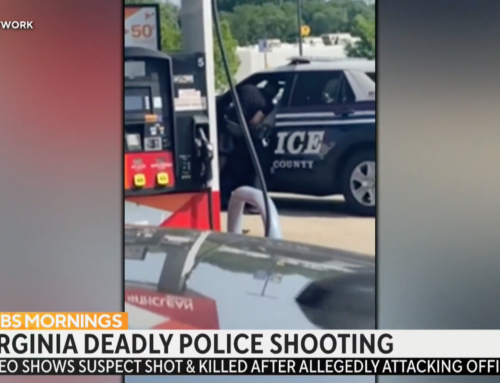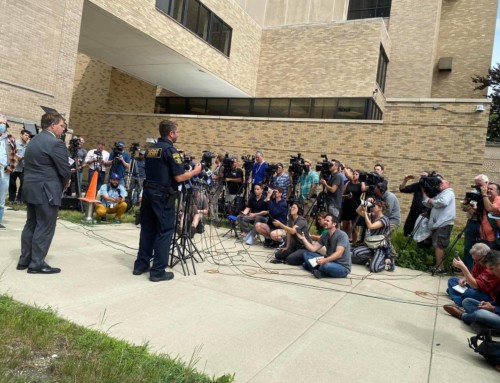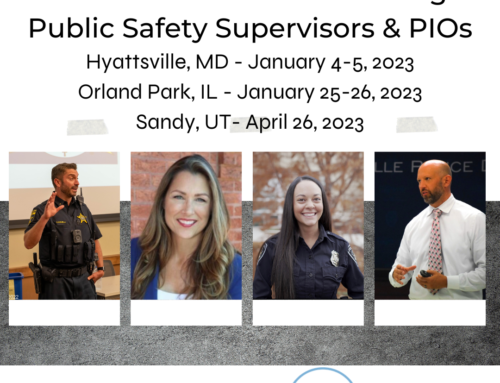 There’s a crisis coming for your organization.
There’s a crisis coming for your organization.
No, I’m not clairvoyant but if history tells us anything it’s that every organization faces threats at some point along their infinite timelines. Predictable that they’ll occur, they are opaque in what, when and how. We rightly fear the active threat and silently hope we don’t face the cyberattack we haven’t fully prepared for, but there are a host of other risks out there. Leadership malfeasance. Allegations of misconduct without merit. Allegations of misconduct with merit. Going viral on social media for any of those reasons. Severe weather impact. Civil unrest. The list goes on.
Virtually every organization can benefit by taking their message directly to the public, yet over the years of teaching crisis communications and positive public relations principles to law enforcement and beyond, I’ve found that leaders can be broadly placed in one of three categories when it comes to communicating both inside and outside of their organization.
The Avoiders: This group never, or almost never, sees communication as a smart strategy, either because they don’t see the need or because they only see the possible negative outcomes. And when a crisis strikes, their position is only amplified. This strategy, if it can be called one, is also known as “hide and hope.” Like the proverbial ostrich with their head in the sand, if only they don’t look at the problem too deeply, just maybe it will dissipate like a morning fog. (According to National Geographic, the world’s largest birds don’t actually employ that risk-avoidance strategy. So neither should we.)
The Accepters: Understanding the inherent risks of “hide and hope,” the Accepters get that they need to have a message in front of their audience but they lack the confidence or training to do it well. This largest group of the three leaders believe in the concepts of transparency and accountability, they just aren’t always entirely sure how to accomplish those twin goals that build trust. The good news is that confidence comes with training and practice.
The Accomplishers: Those who consistently get it done aren’t the largest of the three groups of leaders, yet they are generally the most successful. Trained and practiced, they understand that whether it’s building positive public relations or internal solidarity when things are going well or communicating through a crisis when they aren’t, putting paint on the canvas often and early means getting to contribute to the picture, rather than allowing someone else to paint the story for them. And they do it well.
When I first began instructing and consulting on communications strategies, I tried to be an evangelist to the Avoiders, to no avail. However, by investing time and energy into the Accepters, I found they could quickly become Accomplishers. Like any skill, laying a foundation through training and then building on it through practice, anyone open to embracing communications strategies could become proficient, helping their organization succeed and buoying their own careers in the process.
Avoiders didn’t read this far into the post. Accomplishers didn’t need to, but thanks for sticking around. If you’re an Accepter, there are steps you can take today to move closer to get the job done when it comes to internal and public messaging.
- Seek out communications training. Of course, Julie Parker Communications offers premier training by highly experienced instructors, but we’re not the only ones. Research, vet any potential trainers and their courses, find a good fit and learn the skills that share your organization’s story.
- Nothing makes perfect, but practice comes close. I was driving home from the airport after providing crisis communications training when the news about Tiger Woods’ car crash broke. I listened to the news conference the entire drive home, not because I’m highly interested in golf or Tiger Woods (though I admire his unparalleled skill and am glad to see he’s back on the golf course), but to practice. As I heard each reporter’s question come in, I placed myself in the public information officer’s shoes, trying to decide how I would answer. While we offer video recorded mock news conference scenarios in our training practice can come in the comfort of your own car, if you’re creative.
- Review. When you have the opportunity to represent your organization through communication, take the time to reflect on your performance and the response. Whether it was an all-employee internal email or an on-camera interview, go back and read what you wrote or watch the news report. How does it appear, not as the sender of the message, but as the receiver? What could you do better next time? When we step out of our own heads and put ourselves in the mind of our audience, we can quickly identify what we might do different next time to be even more clear in our message.
Whether you’re interested in one-on-one training or getting the classroom experience for a team, Julie Parker Communications offers training options to fit your needs. Click here to get the process started.
If you’d like to join a class, we’re offering a crisis communications course on September 29th at the Fairfax County (Virginia) Public Safety Headquarters. While this course is law enforcement focused, you don’t have to be a police officer to attend. The principles are broadly applicable.
Christopher Mannino is a retired chief of police with 25 years of law enforcement experience and a graduate of the FBI National Academy. He joined Julie Parker Communications as a senior director and also consults and instructs on the communications topics of media relations, social media strategy, public relations and crisis communications. Connect with him on LinkedIn and on Twitter.




